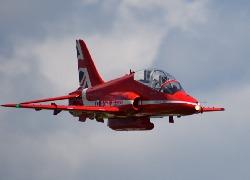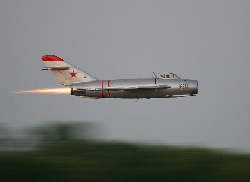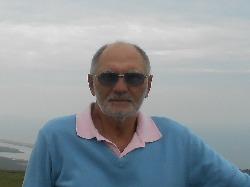- Posts: 886
- Thank you received: 129
Aero Navigation Lights
- DaveBright
-

- Offline
- Moderator
-

Less
More
8 years 8 months ago #11807
by DaveBright

Replied by DaveBright on topic Aero Navigation Lights
Please Log in or Create an account to join the conversation.
- JRI
-

- Offline
- Platinum Member
-

Less
More
- Posts: 504
- Thank you received: 108
8 years 8 months ago #11808
by JRI
Replied by JRI on topic Aero Navigation Lights
Please Log in or Create an account to join the conversation.
- Phil Ford
-
 Topic Author
Topic Author
- Offline
- Administrator
-

Less
More
- Posts: 3163
- Thank you received: 903
8 years 8 months ago #11809
by Phil Ford
Replied by Phil Ford on topic Aero Navigation Lights
Okay Okay! I've been hijacked so you have asked for it.  I thought it may have been of interest to some of you as this circuitry/module is far superior to the crap HK and others led systems. Read on if you wish.
I thought it may have been of interest to some of you as this circuitry/module is far superior to the crap HK and others led systems. Read on if you wish.
The Darlington transistor (often called a Darlington pair) is a compound structure consisting of two bipolar transistors (either integrated or separated devices) connected in such a way that the current amplified by the first transistor is amplified further by the second one. This configuration gives a much higher current gain than each transistor taken separately and, in the case of integrated devices, can take less space than two individual transistors because they can use a shared collector. Integrated Darlington pairs come packaged singly in transistor-like packages or as an array of devices (usually eight) in an integrated circuit.
The Darlington configuration was invented by Bell Laboratories engineer Sidney Darlington in 1953. He patented the invention of having two or three transistors on a single chip sharing a collector. A similar configuration but with transistors of opposite type (one NPN and one PNP) is the Sziklai pair, sometimes called the "complementary Darlington".
The Array is so called because the pairs of transistors are embedded into a chip therefore eliminating the need for rows and rows of transistors.
The Darlington transistor (often called a Darlington pair) is a compound structure consisting of two bipolar transistors (either integrated or separated devices) connected in such a way that the current amplified by the first transistor is amplified further by the second one. This configuration gives a much higher current gain than each transistor taken separately and, in the case of integrated devices, can take less space than two individual transistors because they can use a shared collector. Integrated Darlington pairs come packaged singly in transistor-like packages or as an array of devices (usually eight) in an integrated circuit.
The Darlington configuration was invented by Bell Laboratories engineer Sidney Darlington in 1953. He patented the invention of having two or three transistors on a single chip sharing a collector. A similar configuration but with transistors of opposite type (one NPN and one PNP) is the Sziklai pair, sometimes called the "complementary Darlington".
The Array is so called because the pairs of transistors are embedded into a chip therefore eliminating the need for rows and rows of transistors.
The following user(s) said Thank You: Brian
Please Log in or Create an account to join the conversation.
- JRI
-

- Offline
- Platinum Member
-

Less
More
- Posts: 504
- Thank you received: 108
8 years 8 months ago #11810
by JRI
Replied by JRI on topic Aero Navigation Lights
Hmmm back on track, your diagram shows a very unusual depiction of the circuitry of a darlington array Phil. The circuits shown imply a logical NOT gate with the output voltage pegged to no more than the forward voltage of a diode (i.e typically 0.6v).
I.e. if you drove the input of a gate to say 6V, the output will be ~0v; and if you drive the input to 0V the output will be no more than ~0.6V (or less if germanium).
Are you sure that is the right chip?
I.e. if you drove the input of a gate to say 6V, the output will be ~0v; and if you drive the input to 0V the output will be no more than ~0.6V (or less if germanium).
Are you sure that is the right chip?
Please Log in or Create an account to join the conversation.
- JRI
-

- Offline
- Platinum Member
-

Less
More
- Posts: 504
- Thank you received: 108
8 years 8 months ago - 8 years 8 months ago #11811
by JRI
Replied by JRI on topic Aero Navigation Lights
Actually I take back the bit about the pegged output. The diodes actually point at what is labelled in your depiction as "Common" but is actually "VCC" therefore all they do is protect the NOT gate from overvoltage from the driven circuitry.
Last edit: 8 years 8 months ago by JRI.
Please Log in or Create an account to join the conversation.
- Phil Ford
-
 Topic Author
Topic Author
- Offline
- Administrator
-

Less
More
- Posts: 3163
- Thank you received: 903
8 years 8 months ago - 8 years 8 months ago #11812
by Phil Ford
Replied by Phil Ford on topic Aero Navigation Lights
Definitely Logical Captain.  The ULN2003 is a high voltage, high current darlington array containing seven open collector darlington pairs with common emitters. Each channel rated at 500 mA and can withstand peak currents of 600 mA. Suppression diodes are included for inductive load driving (ie; stepper motors) and the inputs are pinned opposite the outputs to simplify board layout.
The ULN2003 is a high voltage, high current darlington array containing seven open collector darlington pairs with common emitters. Each channel rated at 500 mA and can withstand peak currents of 600 mA. Suppression diodes are included for inductive load driving (ie; stepper motors) and the inputs are pinned opposite the outputs to simplify board layout.
This Darlington switches to ground on it's output pins when triggered therefore completing the circuit. The positive of the load is directly connected to the battery. Pin 9 is used when a motor or inductive load is used.
All this for £0.33p Better than 14 transistors and diodes. :lol:
This Darlington switches to ground on it's output pins when triggered therefore completing the circuit. The positive of the load is directly connected to the battery. Pin 9 is used when a motor or inductive load is used.
All this for £0.33p Better than 14 transistors and diodes. :lol:
Last edit: 8 years 8 months ago by Phil Ford.
Please Log in or Create an account to join the conversation.
Moderators: DaveBright
Time to create page: 0.274 seconds
Latest Posts
-
-

- Various Gliders from Dave Ambrose ex W.M.A.C Membe...
- In WimborneMac Members / For Sale - Exchange - Wanted
- by 4Pedalsfly
- 2 days 8 hours ago
-
-
-

- Ray Ivey's Models
- In WimborneMac Members / For Sale - Exchange - Wanted
- by Phil Ford
- 1 week 1 day ago
-
©
2009 - 2025
WMAC PCF Design



